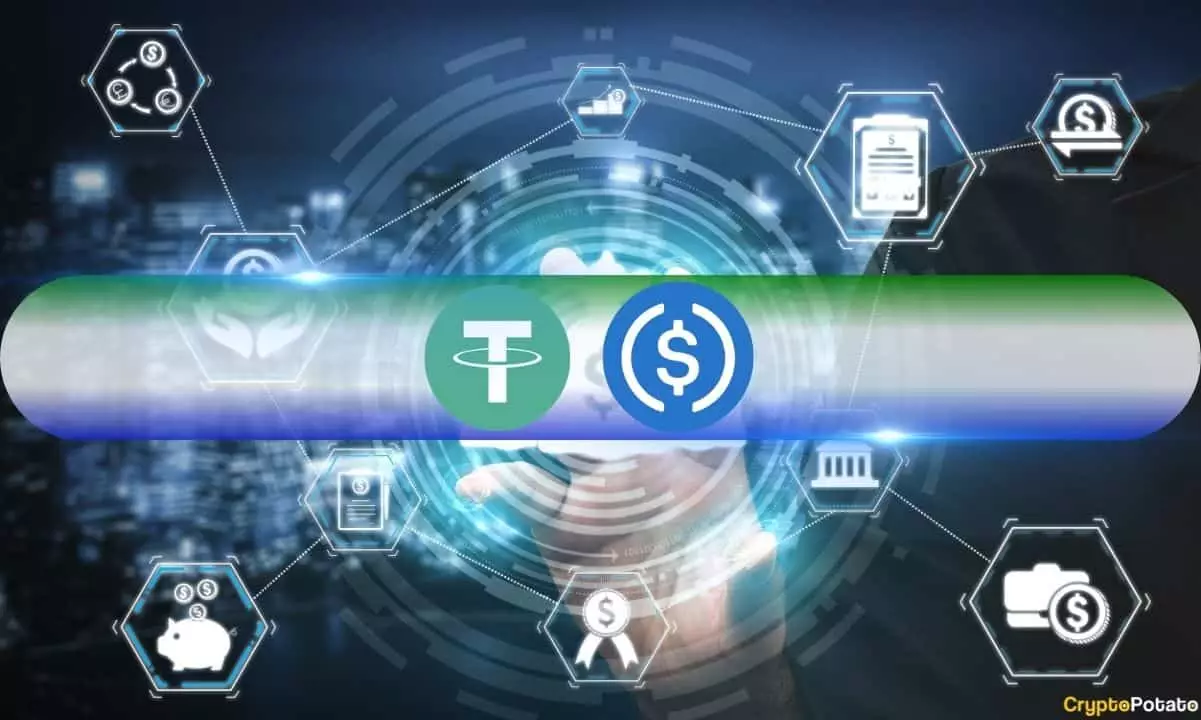The landscape of cryptocurrency is ever-changing, but one development stands out as particularly significant: the meteoric rise of stablecoins. Assets pegged to fiat currencies, primarily the U.S. dollar, are not just maintaining a foothold but are actively reshaping the crypto environment. Tether USD (USDT) and USD Coin (USDC), the two giants in this sector, have emerged as vital apparatuses, facilitating improved liquidity and enhancing the stability of an otherwise volatile market.
Recent analyses from IntoTheBlock indicate that USDT and USDC now contribute to around 50% of the total transaction volume in major cryptocurrencies. This striking statistic underscores the pivotal function that stablecoins serve in fostering reliability and accessibility within the often unpredictable realm of digital currencies. Institutions and individual users alike are taking note of their utility, which encourages an influx of capital and user engagement that the crypto economy desperately needs.
Market Capitalization Milestones
The achievements of stablecoins have been pronounced, with the total market capitalization soaring to unprecedented heights. Reaching nearly $170 billion in August 2023, the growth trajectory of stablecoins continues to attract attention. By mid-October, this figure had further ballooned to more than $172 billion, hinting at a significant shift toward the mainstream acceptance of these digital assets. This upward trend signifies not merely the popularity of stablecoins, but also acknowledgment from traditional financial sectors of their relevance and potential utility.
One of the most consequential aspects of the stablecoin phenomenon is their integration into various payment systems. From remittances to cross-border transactions, stablecoins provide an efficient means of economic exchange, circumventing traditional banking inefficiencies. As decentralized finance (DeFi) continues to gain traction, the presence of stablecoins as a foundation for transactions, liquidity provision, and governance is becoming more pronounced. The dialogue around stablecoins’ advantages is increasingly central to discussions on the future of finance.
Institutional Interest and Emerging Players
Notably, the rise of stablecoins is drawing institutional interest. More companies and financial institutions are finding value in integrating these assets into their business models, enhancing their operational agility. New entrants, like Ripple, are further diversifying the competitive landscape, demonstrating that the market is ripe for innovative and alternative solutions. As the infrastructure for stablecoin use expands, the entry of these players signals a burgeoning ecosystem beyond just USDT and USDC.
A Vision for the Future
Jeremy Allaire, CEO of Circle, has publicly asserted that stablecoins could potentially account for a substantial 10% of the global economic money supply within a decade. This statement reflects an optimistic view that positions stablecoins not just as supplemental assets but as transformative agents capable of altering finance, commerce, and governance landscapes. As countries and corporations explore digital currencies, stablecoins could indeed emerge as the linchpin for widespread adoption and further innovation.
As the adoption of stablecoins continues to expand, their role in stabilizing and invigorating the crypto market cannot be overstated. With increasing institutional engagement, innovative applications, and a significant market presence, stablecoins are not merely a phase but a foundational element shaping the future of digital finance. As we look ahead, their impact will likely extend far beyond the confines of the crypto market into the broader economic landscape.
















Leave a Reply